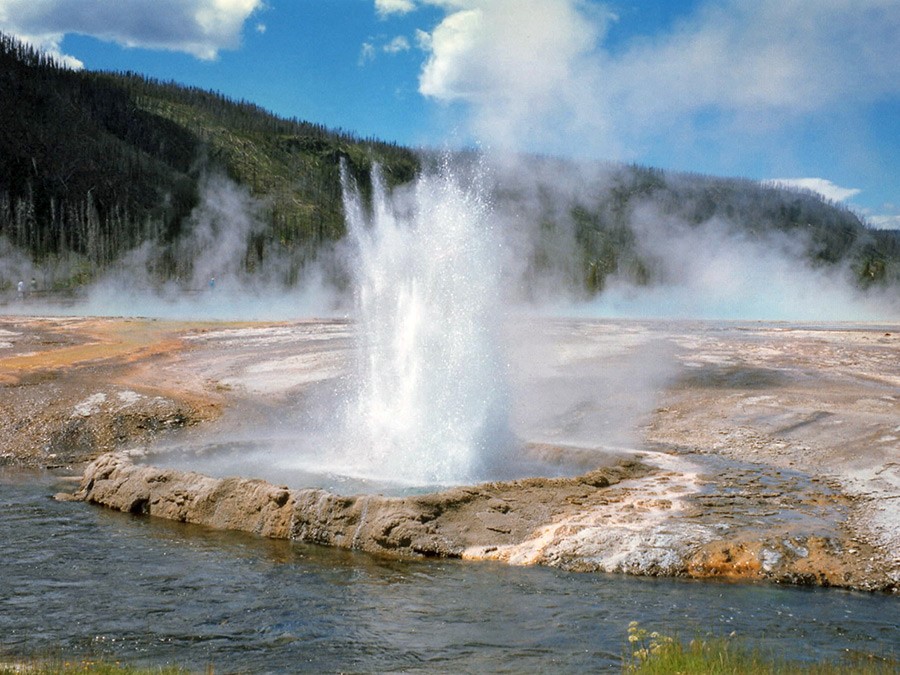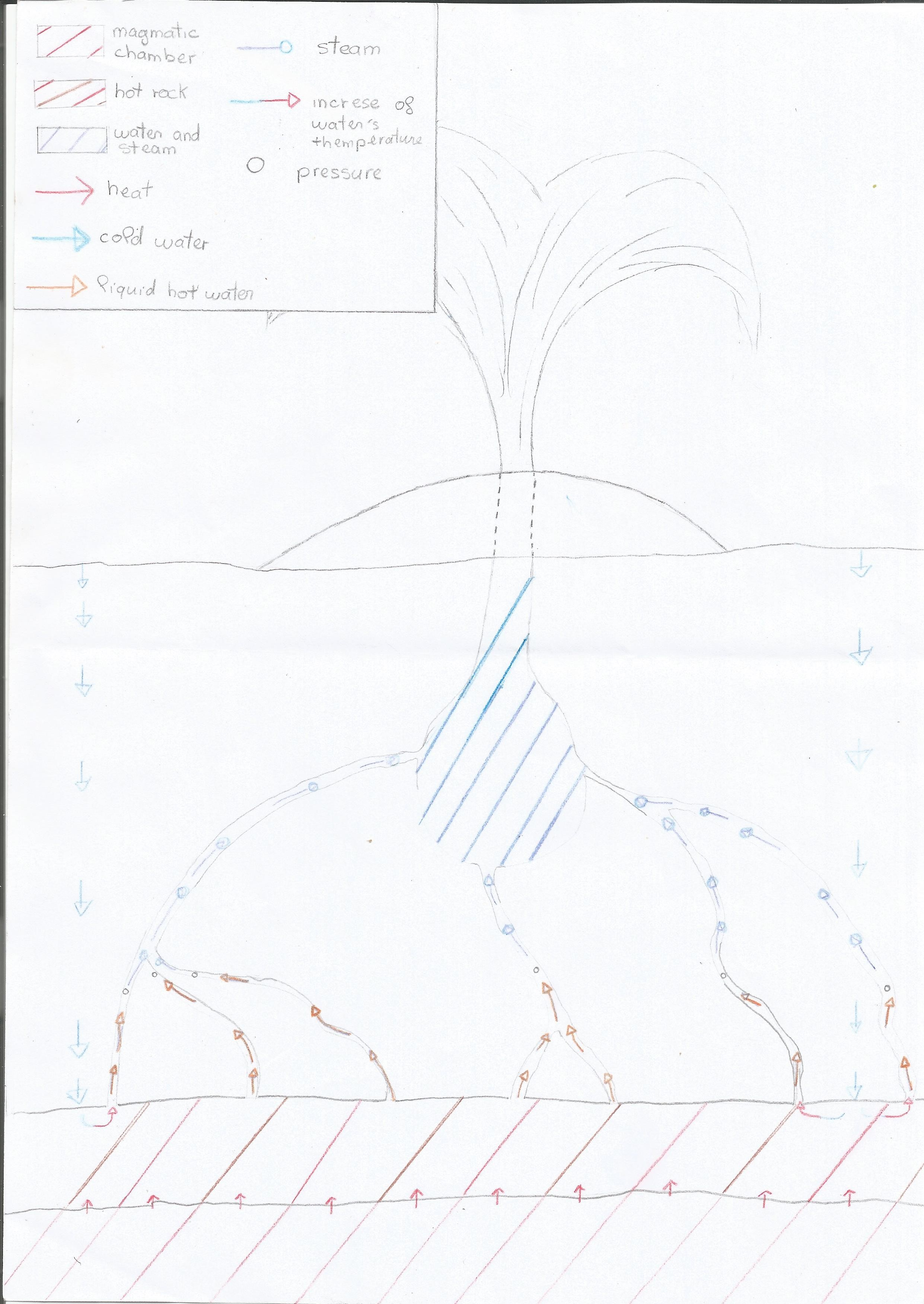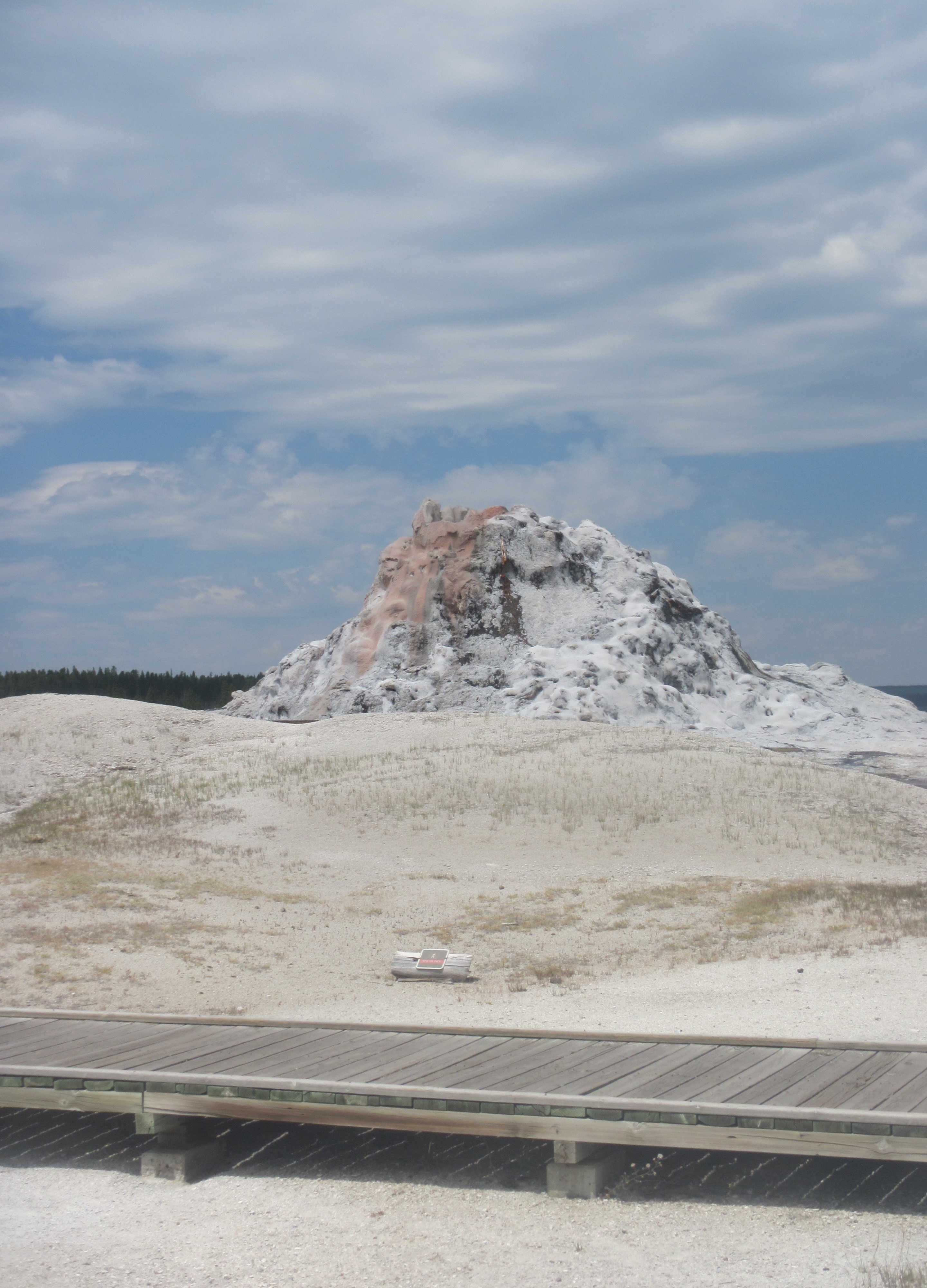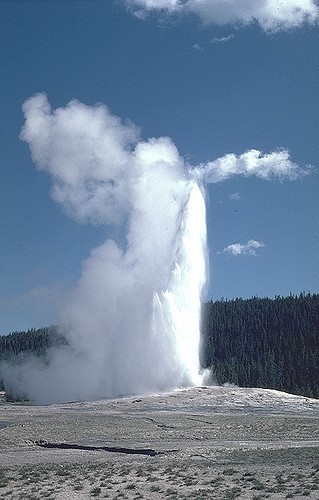Accueil > Nos Actions > Références & Supports > Supports Pédagogiques & Techniques > Geysers and their different shapes
Le Projet
What is a geyser ?

- The Cliff Geyser in the Black Sand Basin in the Yellowstone National Park. August 2018.@ OSI
![]() A geyser is one of the four hydrothermal features (fumaroles or
Or
Métal précieux. Dans le cadre du séjour Le TrésOR des MINES nous chercherons de l’or dans le Val d’Anniviers, à la batée.
steam vents, hot springs, geysers, mud pots).
A geyser is one of the four hydrothermal features (fumaroles or
Or
Métal précieux. Dans le cadre du séjour Le TrésOR des MINES nous chercherons de l’or dans le Val d’Anniviers, à la batée.
steam vents, hot springs, geysers, mud pots).
![]() Geysers erupt water and gases (including steam).
Geysers erupt water and gases (including steam).
![]() They erupt at intervals and have different types of eruptions. These eruptions can be predicted or
Or
Métal précieux. Dans le cadre du séjour Le TrésOR des MINES nous chercherons de l’or dans le Val d’Anniviers, à la batée.
not, according to the geyser.
They erupt at intervals and have different types of eruptions. These eruptions can be predicted or
Or
Métal précieux. Dans le cadre du séjour Le TrésOR des MINES nous chercherons de l’or dans le Val d’Anniviers, à la batée.
not, according to the geyser.
![]() Two thirds of the World’s geysers are in the Yellowstone National Park.
Two thirds of the World’s geysers are in the Yellowstone National Park.
![]() In Yellowstone, the geyser’s names are different from each other. They can be funny or scientific like : Grotto, Old Faithful or Cliff Geyser.
In Yellowstone, the geyser’s names are different from each other. They can be funny or scientific like : Grotto, Old Faithful or Cliff Geyser.
How a geyser works ?
The magma heats rocks, then, these rocks heat the water which comes from snow, rain, glaciers or sea. The boiling water is less dense that the surrounding rocks, so it goes up by cracks to reach reservoirs (cavity or porous rocks). Due to a decrease of temperature and pressure near the surface, the liquid water becomes steam.
In the reservoir, there is a lot of pressure (created mainly by the transformation of water in steam) which makes water and steam go out suddenly.

- Operating drawing
What are the different types of geysers ?
Cone geyser :
Gas and water are ejected up.
When the water goes down, it forms minerals which can be geyserite (or sinter) or travertine according to the underground composition (rich in silica or limestone).
These minerals pile up and form ’cones’.

- The White Dome Geyser erupting in Yellowstone National Park. August 2018.@ OSI
Fountain geyser :
Gas and water are ejected up.
Fountain geysers have larger surface openings. The water doesn’t go as up as the cone geyser because it goes across a basin of water around the geyser.
When the water goes down, it falls into this basin. It is like a fountain.

- The famous Old Faithful Geyser, a highly predictable geyser in the Yellowstone National Park. Eruptions can vary in height from 106-185 feet (32 m to 56 m). August 2018.@ OSI
Written and drawn by Candice VADROT et Léopold BABEAU, participants of the scientific expedition at Yellowstone, July-August 2018.



